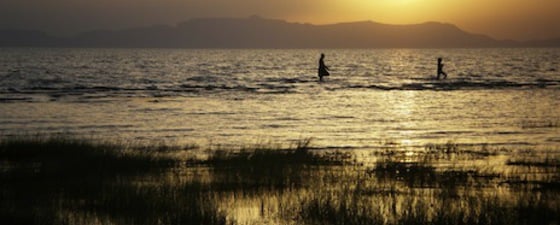For too long a backwater in hydrocarbon terms, dependent on imported oil and gas, East Africa is now well in the limelight. Following on from major gas finds offshore Mozambique, where recently discovered reserves amount to an estimated 50 Tcfg and still counting, Tanzania was the next to announce a major offshore gas find, with BG’s Jodari-1 well bringing the total recoverable gas reserves for that country to about 8 Tcf. Meanwhile, in Uganda a number of companies had been exploring the Albertine Graben and other parts of the East Africa rift, and 2.5 Bboe have been discovered, much to the joy of the inhabitants of that impoverished country.
And now Kenya has joined the party. On 26 March Tullow Oil, together with partner Africa Oil, announced that the Ngamia 1 well in Block 10BB in the Lake Turkana area of north-west Kenya had encountered a 20m column of good quality 30° API oil, with similar properties to the light waxy crude discovered about 500 km to the north-east in Uganda. Shell drilled two wells in the Turkana area in 1992 and one, Loperot 1, found about 10m of waxy crude, but the company pulled out of the country. There was no further exploration in the area until 2007, when the block was awarded to a consortium before it eventually passed to the present owners, Africa Oil and Tullow, which drilled the discovery well about 25 km from the location of Loperot 1. Pre-drill P50 estimates were in the region of 45 MMbo, and the block contains a number of larger leads.
Kenya has four main exploration basins: Lamu, Anza, Mandera and the Tertiary Rift, with a combined surface area of about 500,000 km². The discovery is in the Lokichar Basin, part of the eastern branch of the East African Rift system, where several kilometres of Neogene sediments were deposited in a series of half-graben basins. Only 32 wells have been drilled onshore over the whole of Kenya since independence in 1963, meaning that the stratigraphy is poorly understood and many horizons and potential plays have yet to be investigated.
Increased Interest
Many leads and prospects similar to Ngamia have been identified in the area through recent seismic surveys, and this discovery has considerably improved the expectation of success.As a result, despite the fact that the operator, Tullow, has yet to declare the discovery to be commercial, interest in the surrounding blocks has intensified. It is reported that a number of companies have expressed interest in 13 of the remaining 16 unlicensed blocks, and 29 blocks, both on and offshore, have been licensed to foreign consortia from 14 different companies.
In addition to interest in the onshore potential, Kenya has earmarked eight large deepwater blocks for exploration and Total, Statoil, Apache, Petrobras and Tullow are among the companies reported to have expressed interest in these. The new areas all lie to the east of the 15 existing offshore blocks available, and are between 10,000 and 15,000 km2 and up to 4,000m deep. They will bring the total number of exploration blocks in the country to 46. Plans are underway to drill an additional five oil wells between June 2012 and December 2013 in five blocks, two onshore and three offshore.
Raised Expectations?
The people of Kenya, an estimated 50% of the population of whom live below the poverty line1, are desperately hoping that this discovery will prove commercial and be the first of many. However, they are looking at other countries, such as Nigeria, where the oil revenues benefit only a small minority of the population, and hope to learn from their experience and develop any reserves prudently. It will also take some time before infrastructure would be in place to exploit any discoveries, particularly since the Turkana area is remote, poor and susceptible to tribal clashes.
Any potentially large finds in Kenya will also alter expectations in Uganda, which had looked to its more populous but hydrocarbon-poor neighbour to provide a hungry market for its own recent discoveries. Plans to build a pipeline from the Albertine Graben fields to the ready market of Nairobi and further across Kenya for export from the Kenyan coast may be revised in the light of any local discoveries. Since South Sudan also has vast oil reserves, the neighbours will need to cooperate in order to avoid unnecessary competition and, in the worst scenario, conflict, so that they can all benefit from their hydrocarbon resources.





